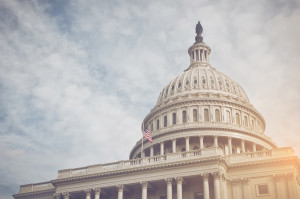Senate Passes Water Infrastructure & Wastewater Treatment Legislation

As we move toward fall, the feverish activity of the summer months is drawing down. The days are shortening and the kids are back in school. Also returning from a long summer break is the U.S. Congress, which recently made headway on an impactful piece of legislation called the Water Resources Development Act of 2016 (WRDA 2016).
Today we’ll tell you what’s in the bill and what the provisions mean for states and municipalities struggling to comply with the Clean Water Act.
‘Our Crumbling Infrastructure’
If you’ve tuned into the presidential election now underway for any meaningful amount of time, you probably heard this phrase: “Our crumbling infrastructure.” Both sides of the aisle and every candidate currently or formerly in the presidential race agreed on at least one thing: the U.S. infrastructure system – from dams and bridges to water systems – are in dire need of repair.
Aiming to encourage the development of new drinking water and wastewater systems – and to replace the lead-contaminated water system of Flint, Michigan — the Senate passed WRDA 2016 on September 15th with a resounding “Yes!” (the vote was 95-3).
Broad Support for Water Resources Bill
Senators aren’t the only ones crying their support for the bill. Associations representing state and municipal governments, ports, wastewater treatment agencies, and drinking water utilities all see the $9.35 billion Senate bill as important for both commercial and public health. Now the legislation moves on to the House of Representatives, where it will be considered sometime this week.
Key Components
If passed, WRDA 2016 would:
- Allow local sponsors to improve infrastructure at their own expense rather than waiting for funding by the Army Corps of Engineers
- Establish a Federal Emergency Management Agency program to improve the 14,726 dams described as having “high hazard” potential
- Give states/municipalities the right to: prioritize Clean Water Act mandates based on what poses the greatest health threats for their communities; complete improvements on a schedule that they can afford
- Create a five-year $75 million technical assistance program for small wastewater utilities
- Require that the clean water state revolving fund appropriate 2 percent of their capitalization grants to small public wastewater systems
The “highlights” of The Water Resource Development Act of 2016 can be found here.
The Clear H2O Method

Assess
AWWT conducts preliminary assessments of your systems, facility, and processes to determine productive methods for wastewater removal, management, and treatment.

Control
Through a patented technology, AWWT will implement the most effective treatments based on our investigatory findings and your wastewater management needs.

Safeguard
Collectively we will achieve and maintain “green and clean” solutions through protection and management planning of your future wastewater treatment methods.
Read blog

"San Francisco Wants To Lead The Future In Water And Wastewater Resources"
Few organizations are in a better position to affect our approach to c...Read More >>

"Harvey Leaves Challenges In Texas, From Drinking Water To Rent Payments"
Harvey is finally out of the picture — but the storm's dev...Read More >>

"The Water Cycle"
Earth's water is always in movement, and the natural water cycle, also...Read More >>
